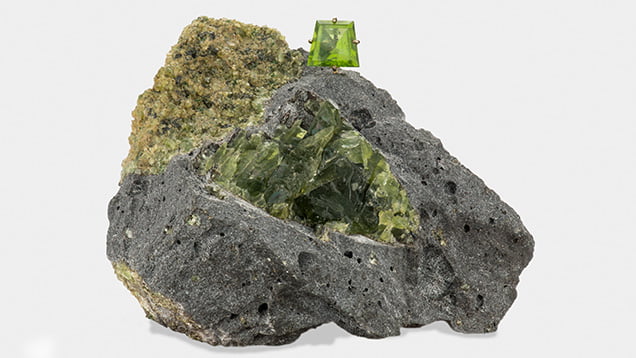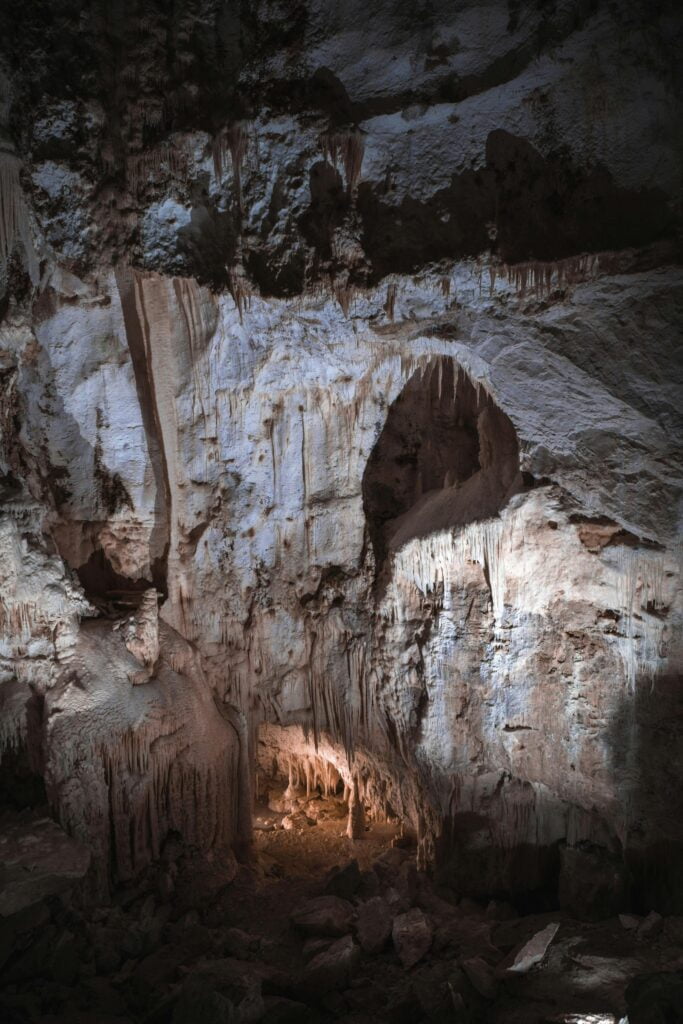Unveiling the Mysteries: Formation and Origin of Colored Gemstones
Unveiling the Mysteries: Formation and Origin of Colored Gemstones. Unearth the secrets behind the vivid hues and mesmerizing sparkle of your favorite gemstones in “Unveiling the Mysteries: Formation and Origin of Colored Gemstones.” This comprehensive array of information sheds light on the fascinating processes that birth diamonds, sapphires, rubies, and other colored stones right from the very womb of the Earth. Learn about the precise conditions, including temperature, pressure, and chemistry, that make the formation of quality gemstones an extraordinary marvel of nature.
Explore how diamonds and their inclusions act as a window to the deep Earth, revealing invaluable information about the enigmatic mantle. Discover how the earthly crust, despite being only about 35 km deep, is the cradle of most colored gemstones, and how deserts in northern Arizona are home to fields of mantle rocks enriched with gemmy olivine or peridot.
Uncover the deep ties between geology and gemology as you journey through the formation of these precious stones, right from the crust-mantle transition to the intriguing jadeite jade birthed in tectonic subduction zones. From the continental margins of Australia and Southeast Asia to the geological processes central to the formation of gem deposits, this scintillating exploration unravels the intricate and intriguing world of colored gemstones.

Formation of Gemstones
Gemstones are natural wonders, treasured by many for their beauty and rarity. You might be interested to know that their formation is a miraculous process that requires very specific conditions.
Understand specific conditions for gemstone formation
Gemstones are not formed randomly. Just like a plant needs the right temperature, water, and soil conditions to grow, a gemstone also needs an exact combination of circumstances for its formation. The formation begins when certain minerals come together under specific pressure and temperature conditions within the earth. This can occur in various ways such as during volcanic activity or the shifting of tectonic plates.
The rarity of quality gemstones
One of the reasons you value gemstones is their rarity. This is a result of the specific conditions needed for their formation. Each gemstone requires its unique set of circumstances, leading to their scarce presence. This rarity is one of the reasons that high-quality gemstones are so highly prized.
Role of pressure, temperature, and chemistry
Pressure, temperature, and chemistry play crucial roles in gemstone formation. When minerals are exposed to intense pressure and heat deep inside the earth, they transform into crystallized structures – gemstones as we know them.
However, the resulting gemstone not only depends on these conditions but also on the chemical makeup of the minerals involved. For instance, while leftover carbon deep under the earth’s surface can eventually turn into diamond, the presence of beryllium will lead to emerald formation.
Contribution of Diamonds to Geological Studies
Diamonds, while admired for their aesthetic appeal, also make significant contributions to our understanding of the earth’s geology.
How diamonds offer information about the Earth’s mantle
Diamonds are formed deep within the earth, in the mantle, under intense pressure and high temperatures. As such, they often encapsulate tiny fragments of the area of their formation. As scientists study these fragments, they gather valuable information about the conditions of the earth’s mantle – a region otherwise inaccessible for direct study.
Inclusions in diamonds
These tiny fragments trapped inside diamonds, often referred to as inclusions, are of significant interest in geological studies. These inclusions often contain other minerals, offering a rare snapshot of the conditions at the depths of the Earth at the time the diamond was formed. This makes diamonds an invaluable tool for researchers studying the earth’s structure and composition.
Role of diamonds in studying the deep earth
Diamonds, because they originate from such great depths, are among the few resources we have that can offer insights into the deep earth. Thus, they are effectively like ‘time capsules’ from the past, offering information on the geological processes that occurred deep beneath the earth’s surface.
Role of Earth’s Crust in Gemstone Formation
The earth’s crust also plays a major role in gemstone formation. Research suggests that nearly all colored gemstones form within this layer of the earth.
Formation of most colored gemstones in Earth’s crust
The Earth’s crust, which extends to a depth of roughly 35 kilometers, provides the right conditions for the formation of most colored gemstones. Over time, several geochemical processes happen within the crust, such as mineral crystallization, which lead to their formation.
Understanding the crust-mantle transition
The crust-mantle transition, also known as the Moho, is a layer where the Earth’s crust transitions into the mantle. This region is of significant geological interest as some colored gemstones also form here. Researchers believe that understanding how these gems form can yield valuable insights into the processes happening at these depths.
Importance of geological research in studying gemstone formation
Detailed study and research in the geological field can lead to an improved understanding of how these beautiful gemstones form in the Earth’s crust. This, in turn, can open up new possibilities in both the scientific and commercial exploration of gemstones.
Gemstones as Geological Tools
Perhaps surprisingly, gemstones also serve as tools for geological research. They offer vital data about the Earth’s mineralogy and geological processes.
How colored gemstones provide data on the Earth’s mineralogy
Some colored gemstones are made up of numerous minerals, and, consequently, studying these gemstones can offer insights into the earth’s mineralogy. As each gemstone forms under specific conditions, their presence can provide clues about the era and environment in which they were formed.
Understanding Earth’s composition and evolution
Given that gemstones are formed under varying geological conditions, they serve as primary resources to study the Earth’s composition and evolution over millions of years. Geological studies of gemstones offer a timeline of the changes and movements within the Earth’s crust.
Insight from colored gemstones into geological processes
Colored gemstones are like storybooks, each telling a unique tale about the interiors of the Earth. Their diverse chemical compositions and crystal structures provide geologists with insights into different geological processes, such as volcanic activity and plate tectonics.

Olivine Deposits in Northern Arizona
The barren deserts of northern Arizona, known for their extensive lava flows, are also home to some fascinating geological features.
The barren deserts as fields of lava flows with gemmy olivine
While the arid deserts of northern Arizona may seem lifeless, they are actually a gold mine for geologists. They are known fields of lava flows which include xenoliths (rock fragments) of mantle rocks and contains the fascinating gemstone olivine, otherwise known as peridot.
Understanding xenoliths of mantle rocks
These xenoliths offer a rare glimpse into the mantle, a layer of the Earth typically inaccessible for study. The gemmy olivine embedded in these xenoliths tell fascinating stories about the Earth’s mantle.
Importance of olivine deposits for geological studies
As olivine is formed deep within the earth, under very high pressures, the study of its deposits can provide enormous insights into conditions and processes occurring within the earth’s mantle.
Volcanically Associated Rubies and Sapphires
Rubies and sapphires, two of the most prized gemstones, have a deep geological connection with volcanic activity.
Finding rubies and sapphires near the continental margins of Australia and Southeast Asia
In the geological world, certain places are famous for specific gemstones. One such example is the continental margins of Australia and Southeast Asia, known for their deposits of rubies and sapphires. These gemstones are typically found in regions that have experienced significant volcanic activity.
Deep insights into the Earth from these colored gemstones
Both rubies and sapphires offer deep insights into the Earth’s mantle. Owing to their formation in areas of substantial volcanic activity, studying these gemstones is essential for understanding how heat and volatile substances from the mantle are transported to the Earth’s crust.
Studies of the geological processes forming these gemstones
The formation of rubies and sapphires is a result of specific geological processes including volcanic events and subsequent cooling. A detailed study of these processes can help researchers understand the series of events and conditions which cause these gemstones to form in specific regions.

Geological Processes in Colored Stone Deposits
Many factors contribute to the formation of colored stone deposits, including tectonic activity, heat transfer, and fluid movement. https://mauragemsandjewellery.org/what-are-the-top-4-gemstones/
Role of tectonic events, heat transfer, and fluid movement
Tectonic events, such as the movement and collision of Earth’s plates, generate immense heat and pressure, providing the conditions necessary for gemstone formation. Heat transfer is also critical as it fuels the crystal growth, while fluid movement contributes to depositing the gem-bearing minerals in the crust.
Crystallization of gemmy crystals of corundum, beryl, and garnet
Gemstones like corundum (which forms ruby and sapphire), beryl (forming emerald), and garnet, all crystallize under these specific geological conditions. Each gem forms in a unique way, making the study of these processes fascinating for researchers.
Understanding how geological processes form most colored stone deposits
Given the unique circumstances required for the formation of each type of gemstone, it’s clear that a complex combination of tectonic events, heat transfer, and fluid movement result in their creation. Whereas one gemstone might require intense pressure, another might form quicker under high temperatures: each gem tells a unique geological story.
Formation of Jadeite Jade
Jadeite jade, a unique gemstone, is formed under very specific geological conditions.
Understanding how jadeite jade forms
Jadeite forms under high pressure and moderate temperature conditions, generally in subduction zones where one tectonic plate is forced under another. These zones are characterized by high fluid activities and intense pressure, which lead to jadeite’s formation. https://www.aigsthailand.com/
Role of subduction zones in its formation
As mentioned, jadeite forms in subduction zones. The subducted plate goes into the Earth’s mantle, carrying with it water that prompts chemical reactions. These reactions can dissolve and alter minerals like jadeite, ultimately helping in their formation.
Unique characteristics of this colored stone
Jadeite jade is known for its rich, intense green color and high toughness, which makes it desirable for carving intricate designs. Studying jadeite and its unique characteristics not only unveils more about its formation but also helps in distinguishing it from other similar-looking material like nephrite jade.

The Role of Gemstones in Geological Research
Beyond their exquisite beauty, gemstones are invaluable in geological research. Their study helps us understand more about the Earth’s mineralogy and geological evolution.
Contributions of gemstones to geological research
Gemstones offer much more than just sparkle. They are like time capsules, providing insights into the geological conditions prevailing at the time and place of their formation. Through their study, geologists have uncovered fascinating details about the Earth’s mineralogy, and the geochemical processes that have shaped its evolution over billions of years.
Understanding earth’s mineralogy and geological evolution through gemstones
From the diamond’s journey deep from the mantle to the ruby’s crystallization in metamorphic rocks, each gemstone holds evidence of Earth’s evolution. Their study can offer enriching information about the mineralogy and geological processes that have shaped the Earth.
Utilization of gemstone’s data in various geological studies
Beyond the undeniable aesthetic appeal, gemstones also hold valuable scientific data. The information obtained from studying gemstones is used by geologists to better understand the Earth’s mineralogy, composition, and the geochemical processes that occur within it.
Chemical Composition of Gemstones
The unique color of each gemstone can be credited to its specific chemical composition, which results from the minerals present during formation.
Understanding the chemical makeup of colored gemstones
Gemstones are essentially minerals with specific chemical formulas. This specific blend of elements not only determines a gemstone’s color but also its hardness, crystalline structure, and other physical properties. Studying these compositions is an integral part of gemological and geological research.
How chemical composition affects gemstone color
Different elements bring about different colors in gemstones. For instance, chromium causes a red color in ruby and green in emerald, while iron and titanium give the blue color to sapphires. Understanding a gemstone’s chemistry can thus provide clues to its origin and means of formation.
The role of minerals in gemstones’ compositions
Different minerals contribute to gemstone formation. For instance, beryl combined with chromium creates emerald, while with manganese, it forms pink morganite. Each combination of mineral compounds results in a unique gemstone, highlighting the beauty and diversity of the Earth’s geological processes.

